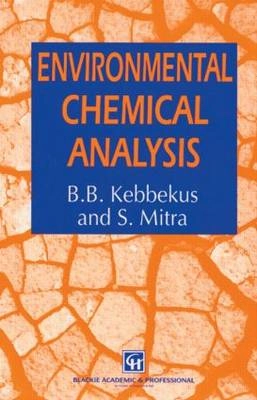

Environmental Chemical AnalysisUpplaga 1
- Upplaga: 1a upplagan
- Utgiven: 1997
- ISBN: 9780751404562
- Sidor: 344 st
- Förlag: CRC Press
- Format: Häftad
- Språk: Engelska
Om boken
The study of the environment requires the reliable and accurate measurement of extremely small quantities of chemicals and the ability to determine if they are pollutants or naturally occurring species. Historically, a "dilute and disperse" method of waste disposal has been accepted; yet as we learn the long-term consequences of such an approach, it is clear that more rigorous waste management techniques are necessary to understand the sources and fates of contaminants and to regulate their discharge.
This volume presents the details of the basic analytical science involved in making these measurements. It concentrates on the basic principles of sampling and sample preparation, followed by the chemical principles of the major instrumental methods used in chemical analysis, and detailed discussions of the major environmental matrices. This book also provides coverage of topics usually only partially discussed in textbooks, such as quality assurance plans and statistical data handling.
Students majoring in environmental sciences need a foundation in measurement techniques used in the field. Environmental Chemical Analysis gives students a thorough grounding in this field and enough information to judge the quality and interpret the information produced in the analytical laboratory.
Åtkomstkoder och digitalt tilläggsmaterial garanteras inte med begagnade böcker
Mer om Environmental Chemical Analysis (1997)
I november 1997 släpptes boken Environmental Chemical Analysis skriven av S Mitra, B B Kebbekus. Det är den 1a upplagan av kursboken. Den är skriven på engelska och består av 344 sidor. Förlaget bakom boken är CRC Press.
Köp boken Environmental Chemical Analysis på Studentapan och spara pengar.
Referera till Environmental Chemical Analysis (Upplaga 1)
Harvard
Mitra, S. & Kebbekus, B. B. (1997). Environmental Chemical Analysis. 1:a uppl. CRC Press.
Oxford
Mitra, S & Kebbekus, B B, Environmental Chemical Analysis, 1 uppl. (CRC Press, 1997).
APA
Mitra, S., & Kebbekus, B. B. (1997). Environmental Chemical Analysis (1:a uppl.). CRC Press.
Vancouver
Mitra S, Kebbekus BB. Environmental Chemical Analysis. 1:a uppl. CRC Press; 1997.
Bokens omdöme
Ingen har recenserat den här boken ännu.



















